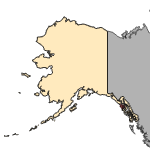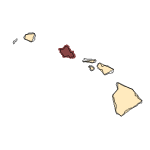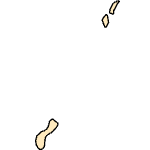Rana aurora
(Northern Red-legged Frog)
Amphibians-Frogs
Native Transplant |
|
Common name: Northern Red-legged Frog
Synonyms and Other Names: Rana aurora aurora, Rana agilis aurora, Rana temporaria aurora
Taxonomy: available through
www.itis.gov
Identification: Rana aurora is a smooth-skinned frog with a brown, reddish-brown or greenish-gray color on its dorsal side with a peppering of small black spots. The frog's common name comes from the red coloration on its abdomen and undersides of its arms and legs. This red coloration is not apparent in juveniles. A light lip-line is usually present from the eye to shoulder and boarded above by a dark mask (Dodd 2013). Rana aurora’s call during the day or night is a very quiet weak series of 5-7 notes, sounding like uh-uh-uh-uh-uh, lasting 1-3 seconds (CaliforniaHerps.com 2019).
The tadpoles of Rana aurora are a tan to dark brown color with scattered clumps of golden flecks. The dorsal and ventral tail fins have tiny dark spots and a golden tone. Small tadpoles have a light gold line along the side of the body that disappears as the tadpole grows. The labial tooth row formula, defined as a fraction designating the location and number of labial tooth rows, are 2/3 or 3/4 (Stebbins 2003). The total size of the tadpole before metamorphosis is 50-70 mm (total length) (Dodd 2013).
Size: Males are up to 68 mm and females to 101 mm (snout-urostyle length) (Jennings and Hayes 1994). Tadpoles range in size from 15-70 mm (total length; Dodd 2013).
Native Range: Rana aurora is native from southwest British Columbia, including Vancouver Island, south along the Pacific Coast to Mendocino County, California. The range extends eastward to the western foothills of the Cascades (Jennings and Hayes 1994). The frog ranges from sea level to about 8000 ft (2438.4 m) in elevation (Stebbins 2003).



|

Alaska |

Hawaii |

Puerto Rico &
Virgin Islands |

Guam Saipan |
Hydrologic Unit Codes (HUCs) Explained
Interactive maps: Point Distribution Maps
Nonindigenous Occurrences:
Table 1. States with nonindigenous occurrences, the earliest and latest observations in each state, and the tally and names of HUCs with observations†. Names and dates are hyperlinked to their relevant specimen records. The list of references for all nonindigenous occurrences of Rana aurora are found here.
Table last updated 12/13/2025
† Populations may not be currently present.
Ecology: Rana aurora occupy a variety of aquatic habitats including wetlands, rivers, streams, ephemeral, and permanent ponds (Jennings and Hayes 1994). In terrestrial environments, adults can be found with coarse woody debris and in mid-level canopy trees (Aubry and Hall 1991). Adults are insectivores and have a longevity of >10 years (Dodd 2013). The home range of breeding adults can be several kilometers. A study of Rana aurora in Oregon found an adult female frog that had moved almost 4.8 km from her known breeding pond (CaliforniaHerps.com 2019). Male Rana aurora are sexually mature the first year after metamorphosis at 45-50 mm (snout-urostyle length; SUL) and females at 60 mm (SUL) during their second year (Hayes and Hayes 2003). Males develop enlarged forearms and dark nuptial pads on each thumb during breeding season. Breeding occurs several weeks after emergence from winter dormancy (Dodd 2013). In Oregon, reproduction begins in January and extends into February (Storm 1960). While in Washington and British Columbia, breeding starts in February or March. Egg deposition requires water temperatures >6° C and only occurs at night (Brown 1975). Egg masses are attached to submerged vegetation and have a diameter of 15-25 cm and contain > 600 eggs (Licht 1971, Brown 1975). Larval development takes on average 35 days in water temperatures ranging from 4.5 to 7.8° C. Tadpoles hatch at 11-12 mm (total length) and take 110 days to develop into juveniles (Brown 1975). Tadpoles feed on periphyton (algae) (Dickman 1968).
Means of Introduction: Rana aurora has been stocked illegally in Nevada from frogs collected in California (Lindsdale 1940). The population in Chichagof Island, Alaska was established from released lab animals (Lerum and Piehl 2007).
Status: Rana aurora is established in Nye County, Nevada and Chichagof Island, Alaska.
Impact of Introduction: As of yet, this species has not been adequately studied or evaluated to determine what ecological consequences, if any, have resulted from its introduction into the USA or elsewhere. To better understand and adequately assess the possible types and magnitude of any suspected ecological and economic impacts would most likely require further field and laboratory research, along with a review of any possible new literature on the subject.
References: (click for full references)
Aubry, K.B., and Hall, P.A. 1991. Terrestrial amphibian communities in the southern Washington Cascade Range. USDA Forest Service, Northwest Research Station.
Brown, H.A. 1975. Reproduction and development of the red-legged frog, Rana aurora, in northwestern Washington. Northwest Science 49:241-252.
CaliforniaHerps.com. 2019. Northern red-legged frog - Rana aurora. http://www.californiaherps.com/frogs/pages/r.aurora.html. Accessed on 08/20/2019.
Dickman, M. 1968. The effect of grazing by tadpoles on the structure of a periphyton community. Ecology 49(6):1188-1190.
Dodd, C. K Jr. 2013. Frogs of the United States and Canada. Volume 2. The Johns Hopkins University Press, Baltimore, MD.
Hayes, M.P. and Jennings, M.R. 1986. Decline of ranid frog species in western North America: are bullfrogs (Rana catesbeiana) responsible? Journal of herpetology 1986:490-509.
Hayes, M.P. and Hayes, C.B. 2003. Rana aurora aurora (Northern Red-legged Frog). Juvenile growth. Male size at maturity. Herpetological Review 34:233-234.
Jennings, M.R, and Hayes, M.P. 1994. Amphibians and reptiles species of special concern in California. California Department of Fish and Game, Inland Fisheries Division, Rancho Cordova, CA.
Licht, L.E. 1971. Breeding habits and embryonic thermal requirements of the frogs Rana aurora aurora and Rana pretiosa pretiosa, in the Pacific Northwest. Ecology 52:116-124.
Stebbins, R.C. 2003. A Field Guide to Western Reptiles and Amphibians (3rd ed.). Boston, MA: Houghton-Mifflin Company.
Storm, R. M. 1960. Notes on the breeding biology of the red-legged frog (Rana aurora aurora). Herpetologica 16(4):251-259.
Author:
Daniel, W. M.
Revision Date: 8/20/2019
Peer Review Date: 8/20/2019
Citation Information:
Daniel, W. M., 2025, Rana aurora Baird and Girard, 1852: U.S. Geological Survey, Nonindigenous Aquatic Species Database, Gainesville, FL, https://nas.er.usgs.gov/Queries/FactSheet.aspx?SpeciesID=68, Revision Date: 8/20/2019, Peer Review Date: 8/20/2019, Access Date: 12/13/2025
This information is preliminary or provisional and is subject to revision. It is being provided to meet the need for timely best science. The information has not received final approval by the U.S. Geological Survey (USGS) and is provided on the condition that neither the USGS nor the U.S. Government shall be held liable for any damages resulting from the authorized or unauthorized use of the information.